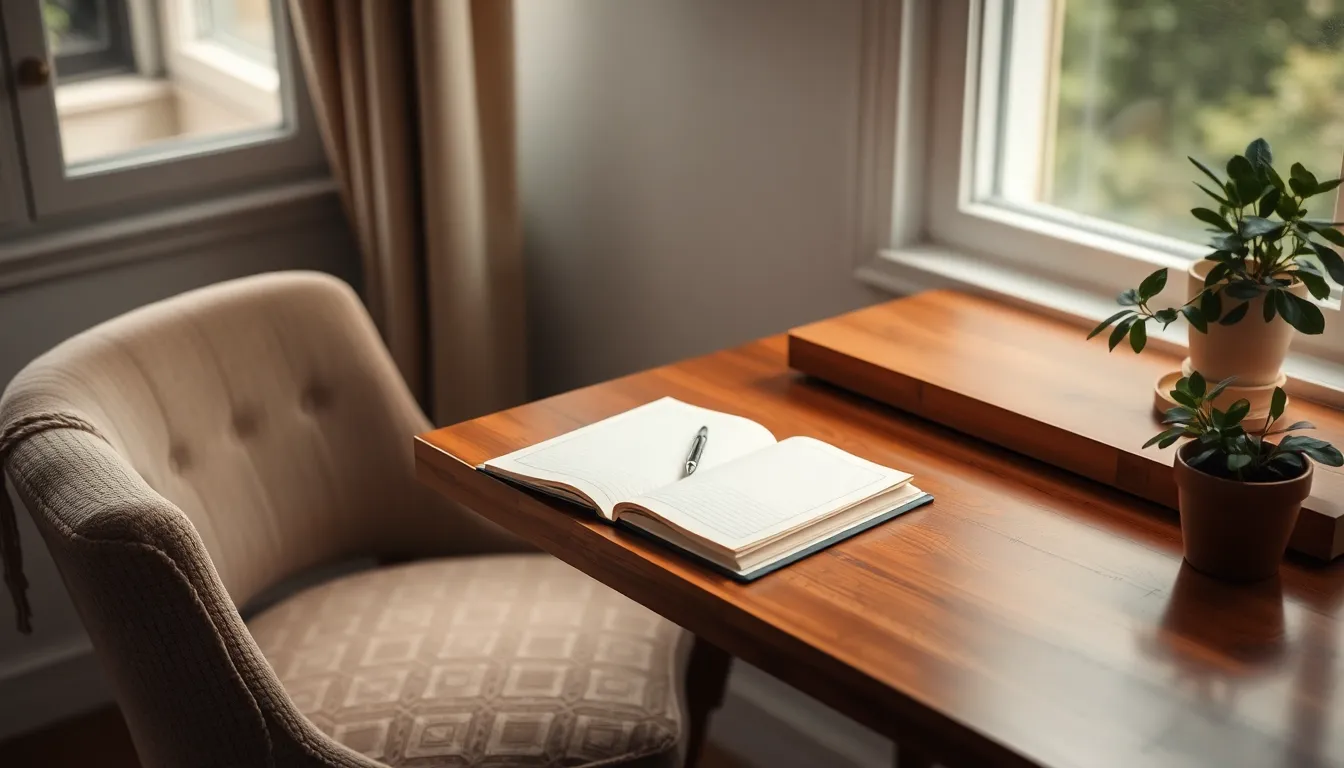In a world buzzing with distractions, finding a moment of peace can feel like searching for a needle in a haystack. Enter mindful journaling—a delightful escape that not only helps clear the mental clutter but also gives your thoughts a cozy place to hang out. Imagine your brain as a crowded coffee shop, and journaling is that quiet corner table where you can finally sip your latte in peace.
This guide dives into the art of mindful journaling, transforming it from a mere task into a joyful ritual. With a sprinkle of humor and a dash of wisdom, it’ll show how putting pen to paper can be your secret weapon against stress and chaos. So grab your favorite notebook and let’s embark on this journey to clarity and self-discovery—because who knew writing could be both therapeutic and entertaining?
Table of Contents
ToggleWhat Is Mindful Journaling?
Mindful journaling involves the practice of paying attention to thoughts and feelings while writing. This technique encourages individuals to engage with their inner experiences, promoting awareness and reflection.
Definition and Purpose
Mindful journaling represents a purposeful exploration of emotions and thoughts. Participants focus on the present moment, allowing spontaneous insights to emerge on paper. This intentional practice fosters a deeper understanding of oneself and cultivates mental clarity. By prioritizing mindfulness, individuals transform journaling into a therapeutic tool that nurtures mental well-being and emotional resilience.
Benefits of Mindful Journaling
Engaging in mindful journaling offers significant psychological benefits. Increases in self-awareness represent one of the main advantages, as individuals recognize patterns in thoughts and emotions. Improved emotional regulation also occurs, helping people manage stress more effectively. Creativity flourishes as users express themselves freely, leading to enhanced problem-solving skills. Regular practice can enhance overall mental health, contributing to feelings of calm and balance.
Getting Started with Mindful Journaling

Mindful journaling begins with choosing the right tools and setting a conducive environment. These essential steps enhance the overall experience and effectiveness of the practice.
Choosing Your Journal
Selecting a journal is crucial. Consider various formats such as lined, blank, or bullet journals. Each format serves different preferences and styles. Opt for a size that fits your lifestyle, whether it’s compact for on-the-go or larger for expansive thoughts. Aesthetic appeal also matters; a visually pleasing journal can create excitement for writing. Visit local bookstores or explore online options to find what resonates. The right journal invites creativity and supports the healing process.
Setting the Right Environment
Creating a welcoming space contributes significantly to mindful journaling. Find a quiet spot free from distractions to foster focus. Ensure comfortable seating with adequate lighting, either natural or soft artificial light. Personal touches, like candles or plants, can enhance the atmosphere and promote relaxation. Incorporating calming elements, such as soft music or essential oils, may further improve concentration. A dedicated space for journaling signals the mind that it’s time for reflection and self-discovery.
Techniques for Effective Mindful Journaling
Mindful journaling becomes even more rewarding when incorporating specific techniques. These practices enhance reflection and deepen the journaling experience.
Prompts for Reflection
Using prompts stimulates thought. Consider questions like “What am I grateful for today?” or “How did I feel in this moment?” These prompts encourage exploration of feelings and experiences. Reflecting on daily moments cultivates a deeper understanding of personal emotions. Additionally, prompts such as “What challenges did I face?” help identify growth areas. Daily or weekly reflections add structure, making the process more effective.
Mindfulness Exercises to Incorporate
Integrating mindfulness exercises enhances the journaling journey. Begin with deep breathing techniques to center thoughts before writing. Focused breathing calms the mind, providing a clearer perspective. Another effective exercise is a 5-4-3-2-1 sensory practice. Identifying five things seen, four things felt, three things heard, two things smelled, and one thing tasted anchors attention in the present moment. Engaging in these exercises prior to writing fosters a more profound connection with thoughts and emotions. Emphasizing awareness acts as a catalyst for richer journaling outcomes.
Maintaining a Consistent Practice
Consistency plays a crucial role in the effectiveness of mindful journaling. Establishing a routine encourages regular engagement with thoughts and feelings.
Building a Journaling Routine
Creating a journaling routine starts with choosing a specific time each day. Morning or evening sessions work well for many individuals. Setting aside 10 to 15 minutes can make a noticeable difference in maintaining the habit. Using reminders, whether through digital calendars or sticky notes, helps keep the practice top of mind. Selecting a quiet space also fosters focus and encourages reflection. Over time, journaling can evolve into an integral part of daily life.
Overcoming Common Challenges
Overcoming challenges associated with journaling can enhance the overall experience. Many individuals face difficulties such as writer’s block. Practicing free writing or using prompts alleviates this pressure. Some may struggle with self-criticism. Emphasizing the importance of non-judgmental writing helps create a safe space for expression. Others might find inconsistent habits daunting. Focusing on flexibility allows for adjustments in timing or content without discouragement. Embracing these challenges empowers a deeper connection to the journaling process.
Mindful journaling is more than just writing; it’s a transformative practice that nurtures mental well-being. By creating a space for reflection and self-discovery, individuals can cultivate clarity and emotional resilience. Embracing this ritual not only relieves stress but also enhances creativity and self-awareness.
Establishing a consistent journaling routine can further deepen the benefits. With the right tools and a supportive environment, anyone can embark on this enriching journey. By integrating mindful techniques and reflection prompts, journaling becomes a powerful ally in navigating life’s challenges. Ultimately, mindful journaling invites individuals to connect with themselves in meaningful ways, fostering a sense of calm and balance in their daily lives.





